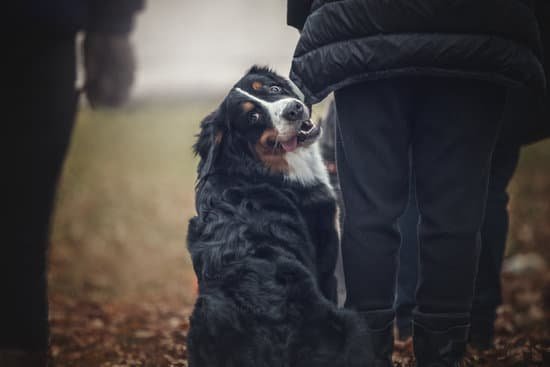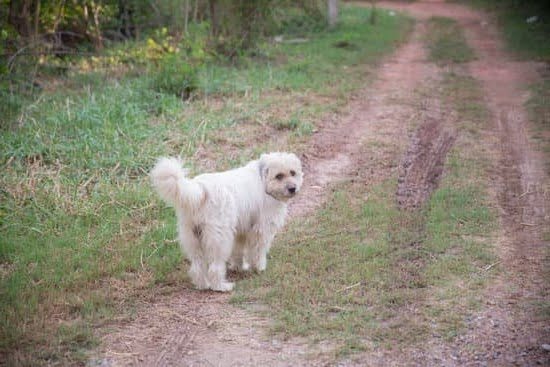Introduction
Using a dog training leash is an important part of teaching your canine companion how to behave in the right way. It allows you to safely and effectively guide them during their training sessions and everyday activities, preventing bad behavior from occurring. The primary benefit is that it allows you to keep control of your pooch in any situation, whether it be at home or out for a walk. Training leashes also enable you to be more consistent with commands, as well as providing opportunities for positive reinforcement techniques such as rewarding desired behaviors.
Beyond the primary benefit of keeping your pup safe and well behaved, dog training leashes come in a variety of different styles and sizes. This means that you can find one which best suits your needs and preference. Leash types range from adjustable walking leads to basic obedience collars, allowing for a wide range of choices for anyone looking for just the right equipment for getting their pup trained up properly. Modern leashes now also include features like quick-release buckles, reflective strips or vibrant hues so they’re both ergonomic and safe while exercising outdoors with your dog in low light conditions.
Ultimately, using a proper dog training leash is an excellent way to ensure that all of your daily activities with your pet will be positive experiences which help strengthen the bond between the two of you!
Types of Dog Training Leashes
Lengths: There are many lengths of dog training leashes available. The most common length is a six-foot leash, which allows the trainer to maintain control while giving the pup enough room to move and explore new environments. A longer leash can also be useful, such as a ten or fifteen foot leash, while a short leash may be better in certain situations such as fine-tuning obedience skills.
Styles: Many different styles of training leashes are available. Traditional slip leashes feature a loop handle and a length of material with an adjustable toggle to fit securely around the waist; however, hands-free styles are becoming more popular for their convenience. These include retractable leashes which allow for more freedom for the handler and pet, and bungee-style leashes that act like shock absorbers. Other specialty styles used in agility training include check cords, floaters, longe lines, track leads and distance leads.
Materials: Most leashes are made from nylon webbing that come in fun colors and patterns; although leather is more traditional, it’s not as durable or easy to keep clean. Cotton webbing is also an option since it won’t absorb liquids the same way nylon does; however, cotton can fray easily so it’s best suited for light use activities such as walking around the neighborhood or through parks. Some specialty materials now used in tack equipment include mohair which is highly durable and easier on both hands and fur; biothane which resists moisture, stretching and fading; and Dyneema® composite fabric which has superior strength compared with other standard materials.
Making the Right Choice
When dog owners are looking for a leash for their pet, it is important to find the right type of leash for their particular needs. The three main types of leashes are standard, retractable, and hands-free. All serve different purposes and have pros and cons.
Standard Leash – A standard leash is the most basic option available and its primary purpose is to keep the dog secure while it’s being walked. It is typically made of leather or nylon, but can also be made from cotton or hemp too. Standard leashes come in various lengths and thicknesses depending on the size and energy level of the dog. Some advantages to using a standard leash include ease of use, better control over your pet as opposed to other options, a variety of colors that allow you to match your pup’s style personality, cost-effective compared to other options, and no additional training needed because they’re so simple to use.
Retractable Leash – Retractable leashes are long leashes that are attached to a handle with a spring-loaded recoil mechanism inside them. They provide more freedom for the dog by allowing them several extra feet or yards away from their owner before needing to be reeled back in tightly. These leashes require additional training for your pup as there could be potential for injury if not handled properly. Pros include: more freedom during walks (although must use caution), multiple ways handle can be held which allows you greater comfort when walking longer distances than with traditional leashes, choice between locking or non-locking mechanisms whichever works best for you and your pup’s needs, stylish handle designs & colors which let you express yourself & add variety when out with your pet and lastly lighter & more flexible than traditional leashes making them easy to carry around while out & about.
Hands-Free Leash – A Hands-Free leash consists of two handles connected by an adjustable strap (usually belt webbing) that allows the user to hold onto each handle while still having control over their pup without using their hands, hence “hands-free”! This type of leash fits around your waist like a belt which offers flexibility as well as making sure both you & your pup stay safe during walks as it provides balance & steadiness when negotiating uneven surfaces etcetera! The advantages of choosing this type include active lifestyle integration (aside from walking, are great for running etcetera), comfort due no required gripping; adjustability (lengthwise); safety assurance amongst those feeling overwhelmed by having less control over larger dogs; reflective choice available which increases night visibility thereby keeping both you & your pet safe even during low light conditions; added storage space due shorter more slender design (comes with sewn in pouches) ideal for storing supplies such as keys etcetera; aesthetically appealing range providing opportunity to show off fashion sense plus comes in all sizes fitting both large/small dogs alike!
Proper Use Guidance
Using a dog training leash can be an essential part of teaching your dog proper behavior and discipline. Knowing the various types of leashes that are available and how to use them correctly is essential for successful training.
There are four main types of leashes you can choose from. The first is a standard leash, which typically includes a cotton or synthetic fabric webbing attached to a buckle at one end and to the collar or harness at the other. The second type is a retractable leash, which contains either metal tape or woven nylon webbing that extends out when the handle is squeezed. A third option is a pinch or choke collar made with links of flat metal connected to each other; it tightens around your pet’s throat when pulled on firmly. Finally, there are short- leaded leashes, with similar styling to standard leashes but shorter in length for easier handling.
Before using any leash, familiarize yourself with its operation and functions so you know how best to utilize it while training your pet. When first introducing your dog to the leash, make sure they feel comfortable and do not get overwhelmed by attaching it as gently as possible – no sudden pulls or jerking. For standard leashes, keeping just enough slack so there is no strain on their neck will give you better control without putting too much pressure on their collar or harness. For pinch collars and choke leashes, pull firmly but gently until they stop pulling back; allowing these collars some play encourages dogs not to pull while still providing guidance when needed.
Finally, remember that outbursts like barking and growling should be redirected with verbal commands rather than physical force from the leash itself – this reinforces proper discipline through verbal conditioning rather than physically punishing bad behavior.
Care and Maintenance
The maintenance required to keep your dog training leash in top condition depends upon the type of material it is made from. Leather leashes, for example, should be treated with a leather conditioner every 2-3 months to prevent drying out and cracking. For nylon or rope leashes, handwashing in warm water with gentle soap is recommended to clean off dirt and grime buildup. Make sure the leash is thoroughly rinsed afterwards and air-dry only. Additionally, inspect the leash regularly to check for fraying or wear-and-tear that may occur from usage, including where it connects to the collar or harness. If you notice any damage or defects in the leash itself, have it replaced by a professional as soon as possible. Lastly, store your dog’s leash flat in a dry area when not in use – this helps it retain its shape for prolonged use.
Conclusion
The type of dog training leash that is right for your needs will depend on the purpose and activities you have planned with your dog. For obedience training, you may need a more traditional style of flat buckle or chain leash. If you’re looking to free up your hands while out on walks, consider a hands-free option like a waist leash or bungee lead. If your primary activity involves agility courses or sports activities, opt for an adjustable rope handling system. Likewise, if you are looking for easy control in a city setting, consider a retractable leash with its variable length. Ultimately, always choose the safest option that works best for you and your pup!

Welcome to the blog! I am a professional dog trainer and have been working with dogs for many years. In this blog, I will be discussing various topics related to dog training, including tips, tricks, and advice. I hope you find this information helpful and informative. Thanks for reading!





